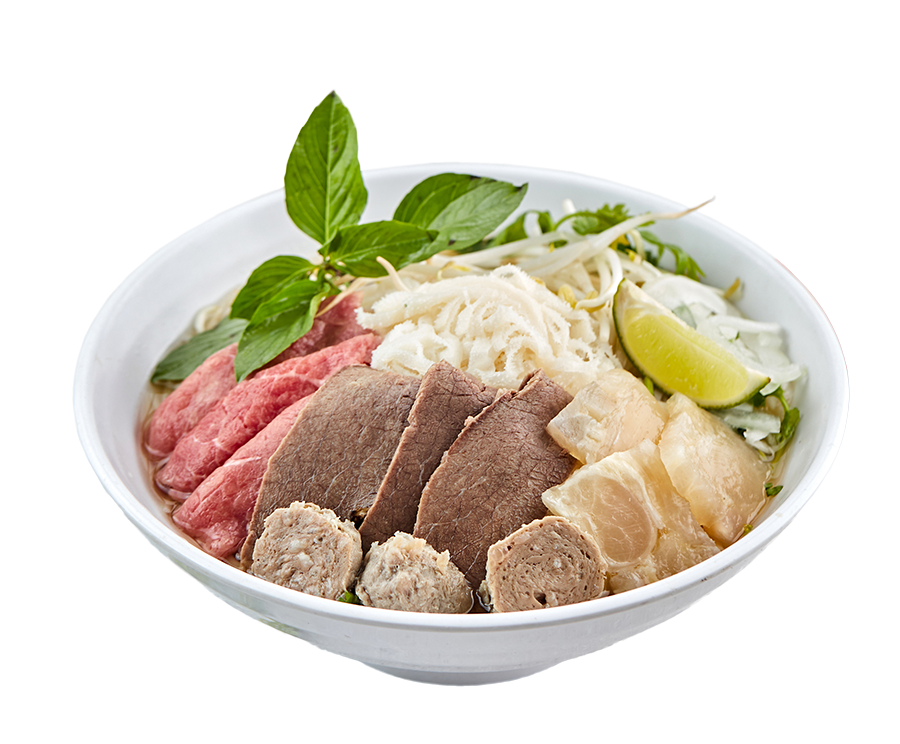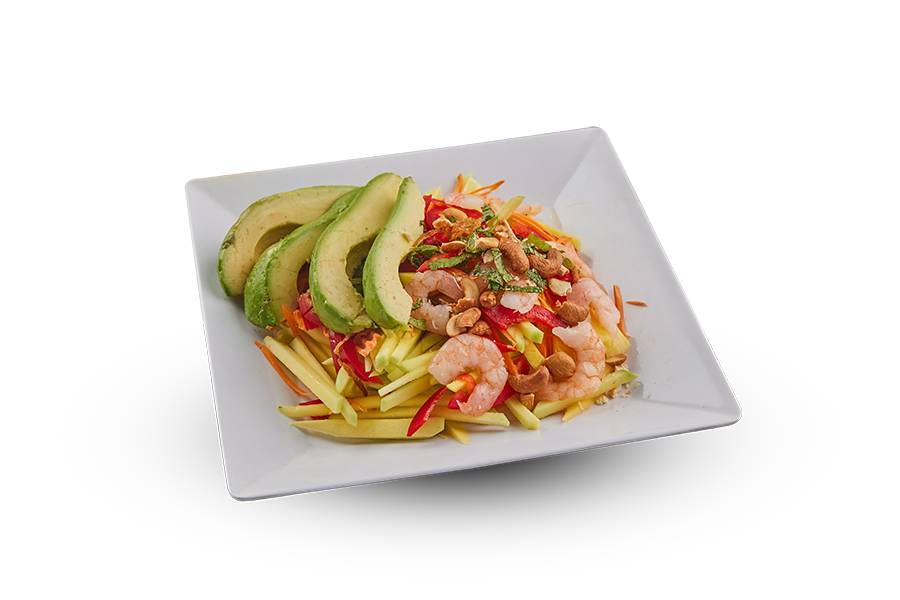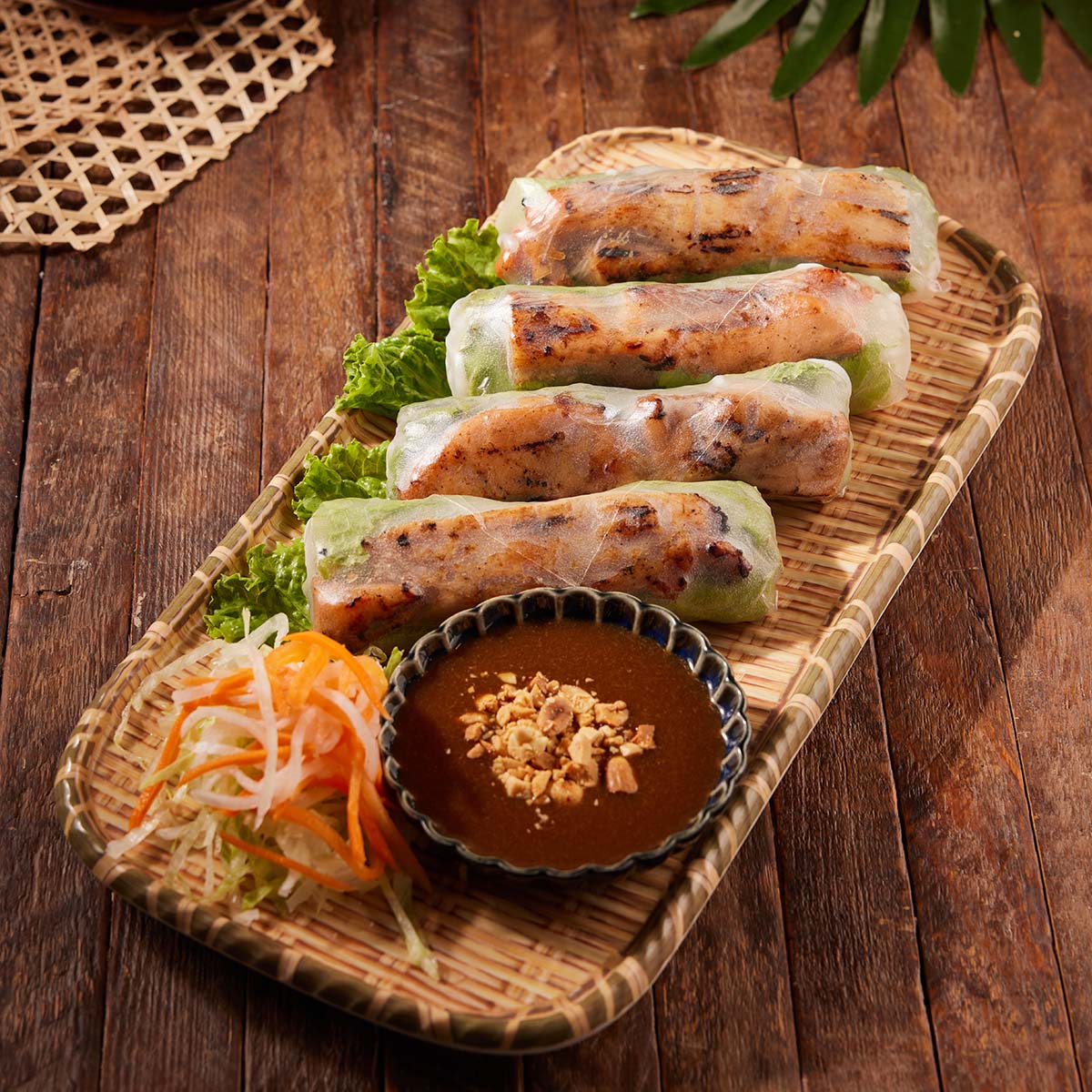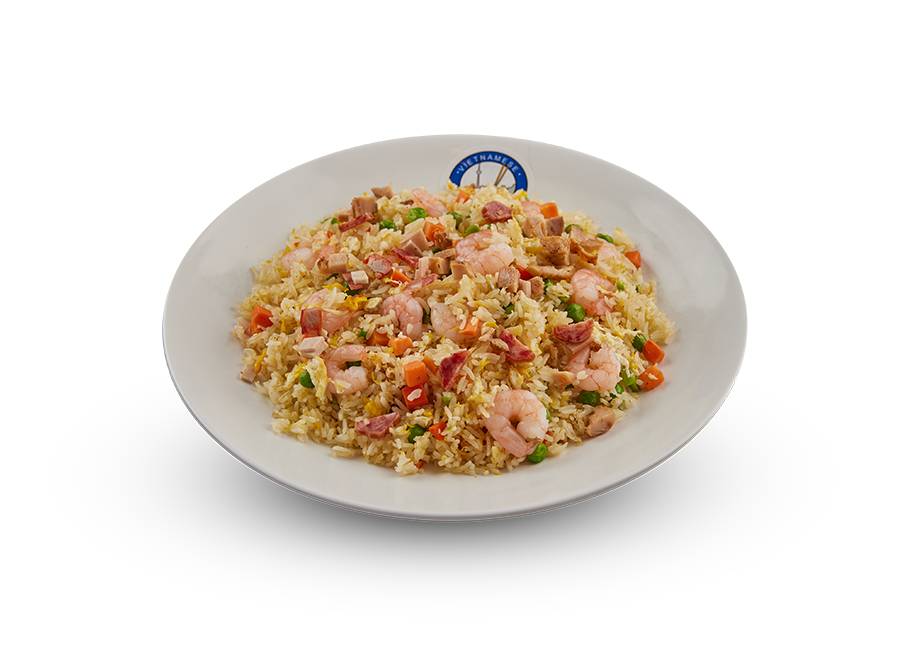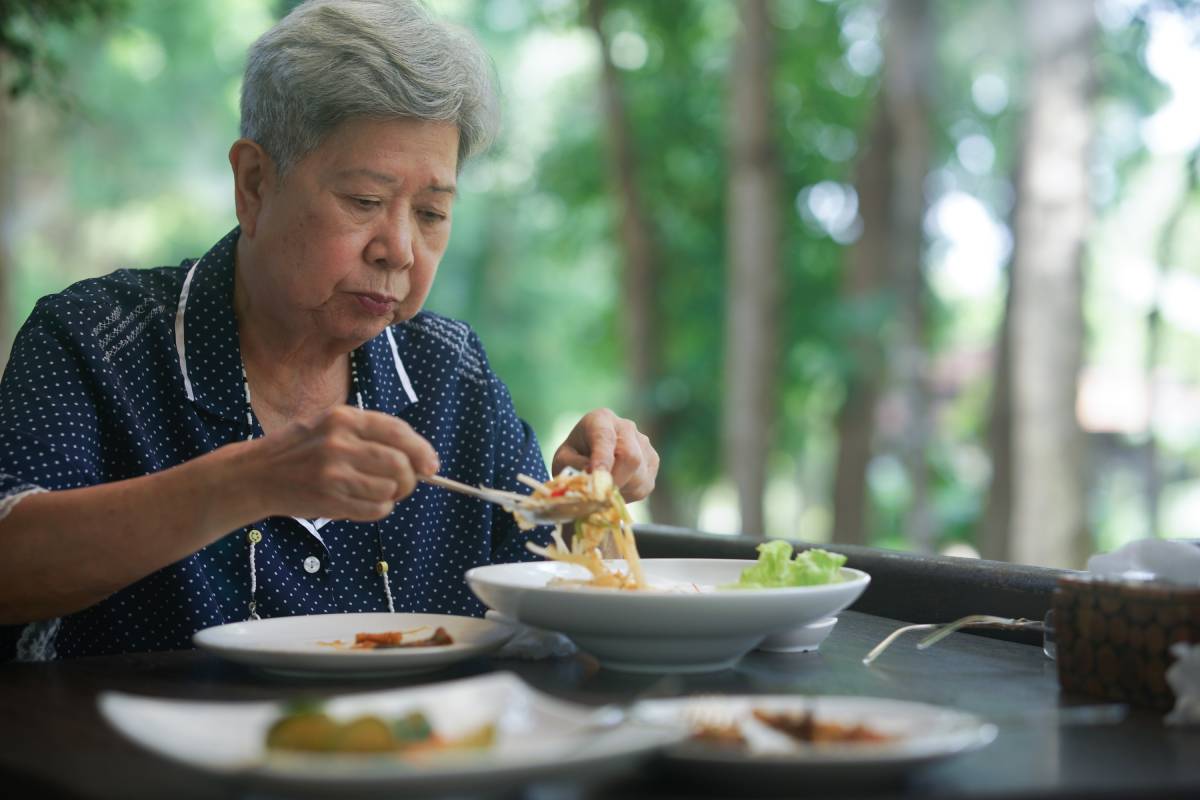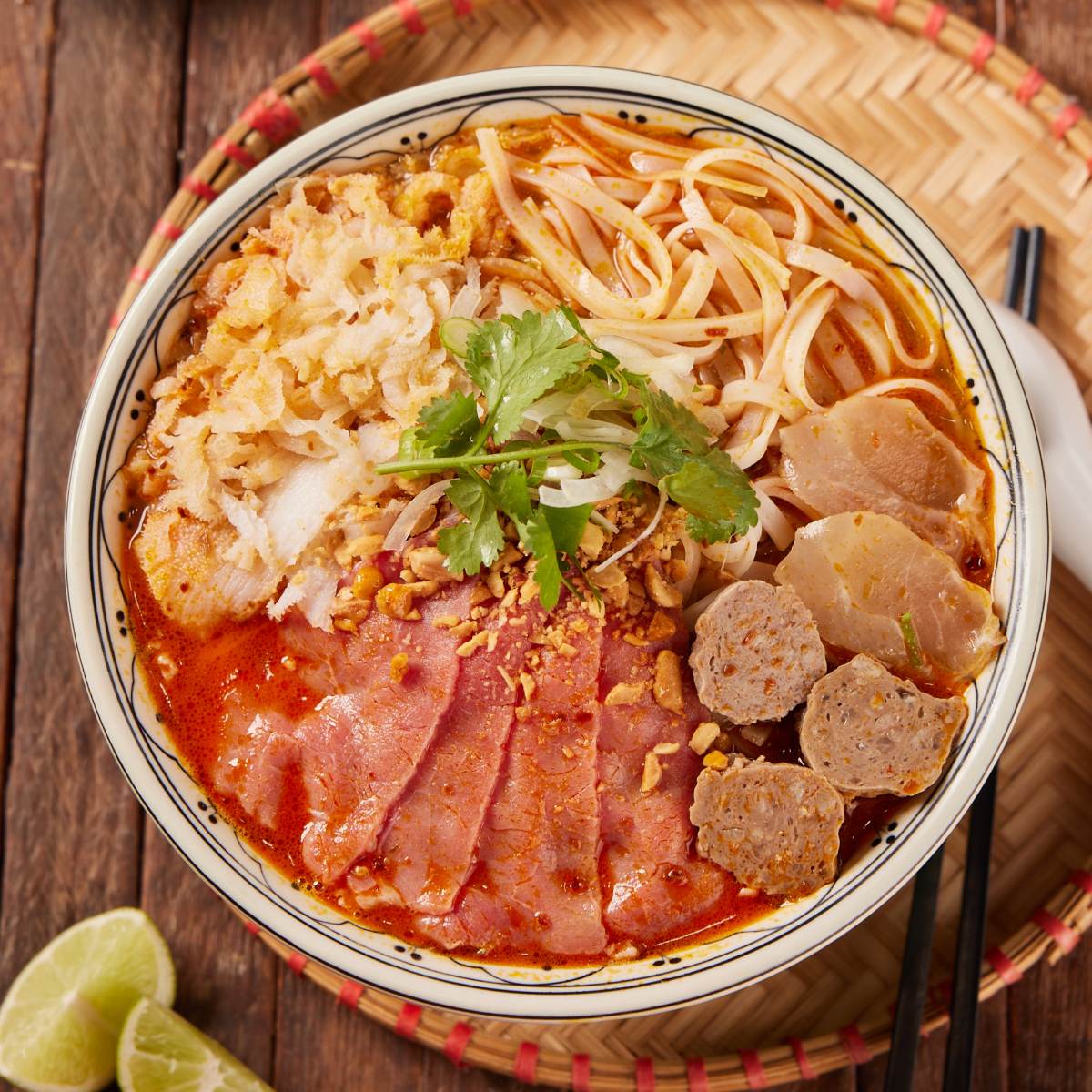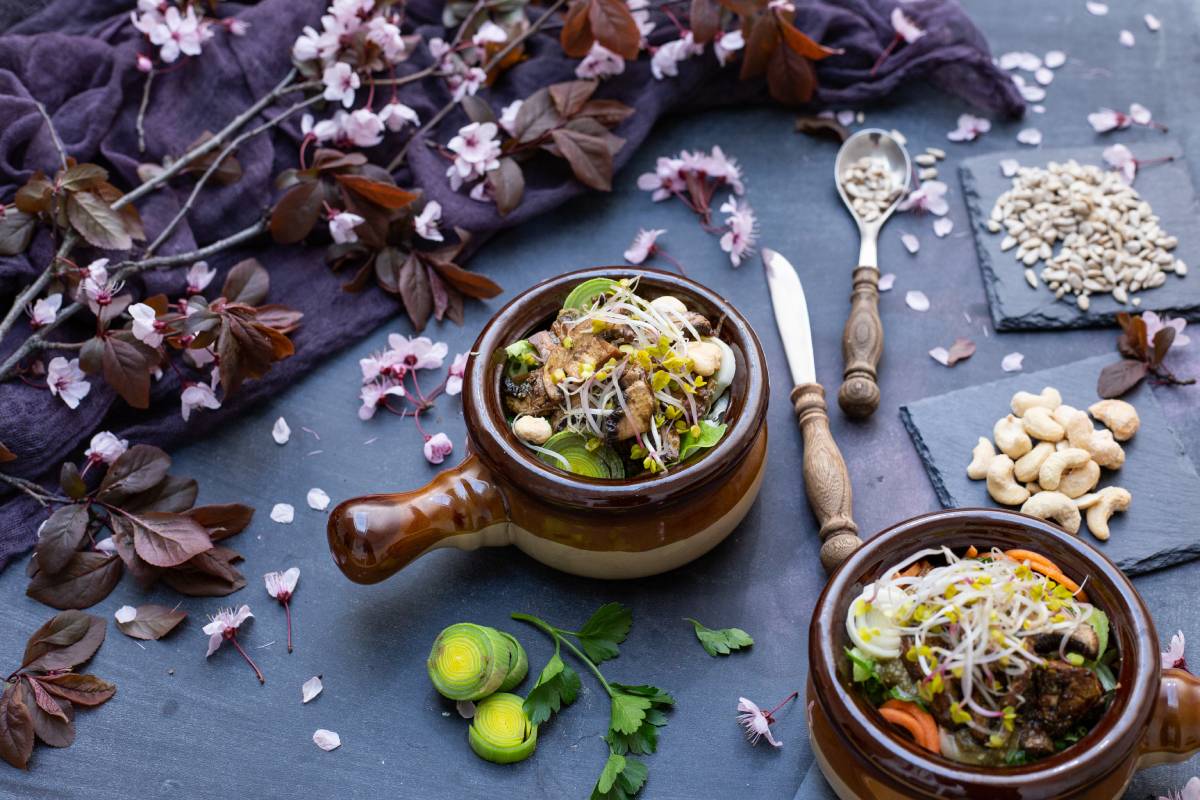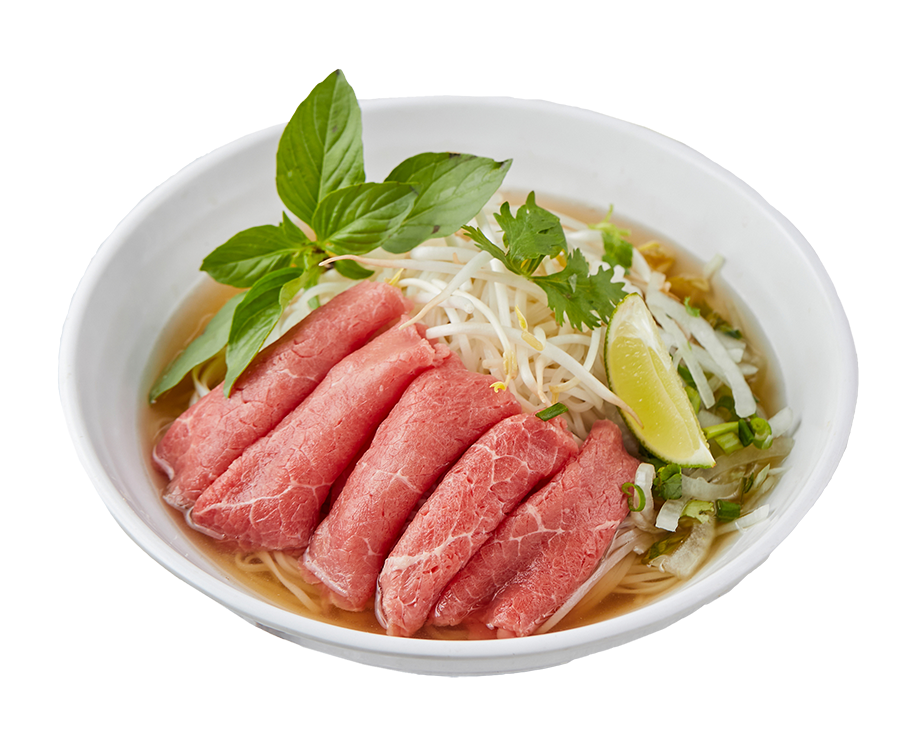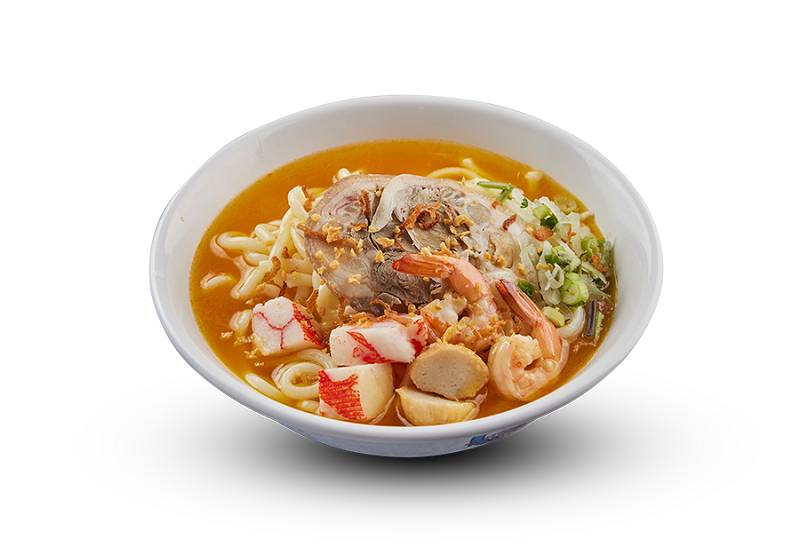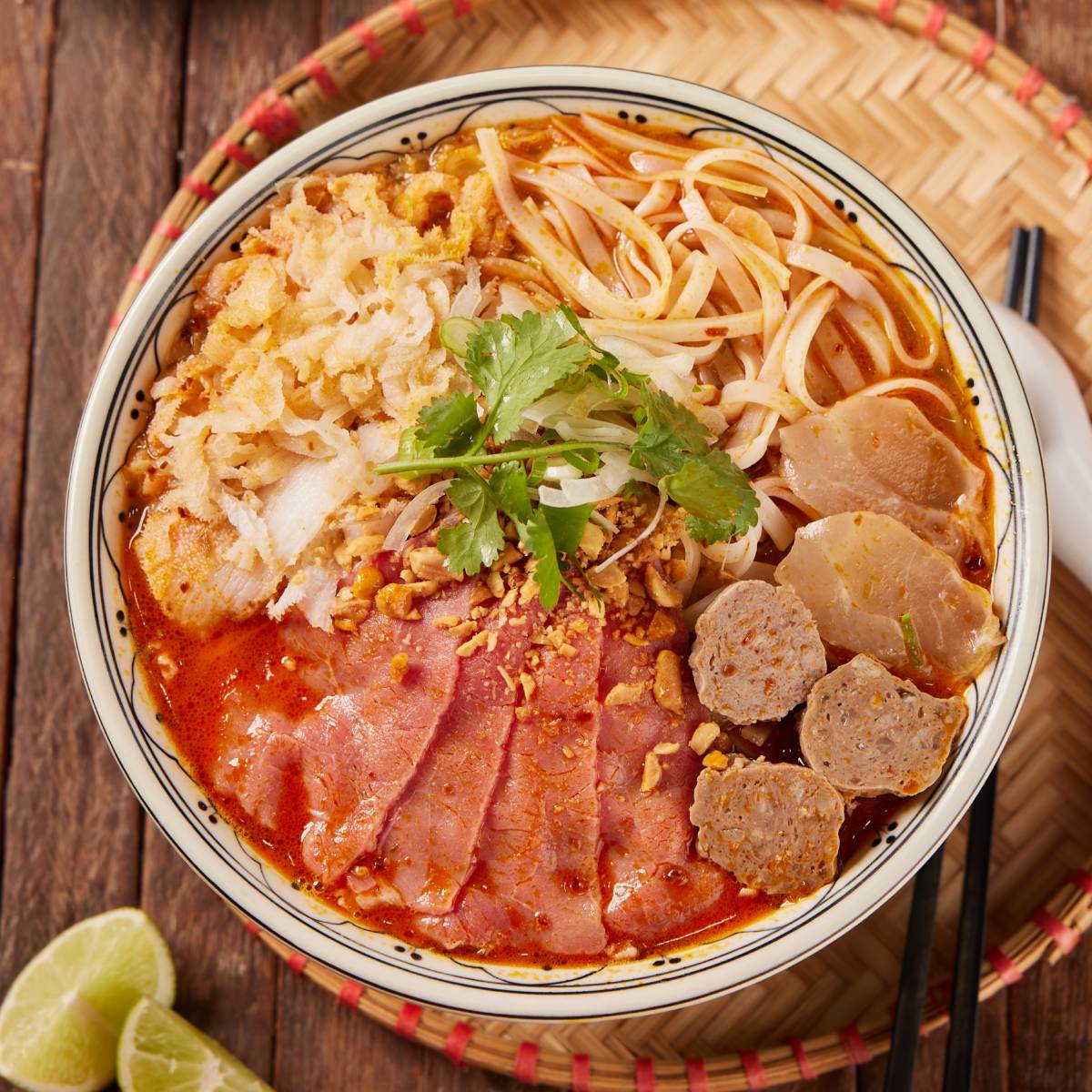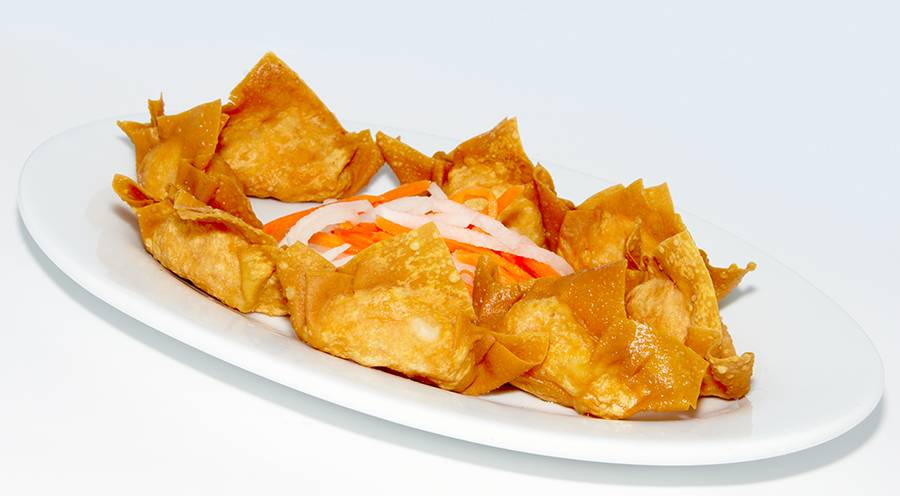Making an authentic Phở Đặc Biệt at home might seem daunting, but with careful attention to detail and the right ingredients, you can create a delicious bowl of pho that rivals any restaurant.
Ingredients
Broth
- 4 pounds of beef bones (marrow and knuckle bones)
- 1 pound beef brisket
- 1 pound beef shank
- One large onion, halved
- 4-inch piece of ginger, sliced lengthwise
- 5–6-star anise
- One cinnamon stick
- 5-6 cloves
- One tablespoon coriander seeds
- One tablespoon of fennel seeds
- One cardamom pod
- One teaspoon of black peppercorns
- 1/4 cup fish sauce
- One tablespoon salt
- Two tablespoons sugar
- 6 quarts water
Noodles and Garnishes
- 1 pound dried or fresh flat rice noodles (bánh phở)
- 1/2-pound beef tenderloin, thinly sliced
- Fresh bean sprouts
- Fresh herbs (cilantro, Thai basil, and mint)
- Lime wedges
- Thinly sliced chili peppers
- Thinly sliced onions
- Hoisin sauce
- Sriracha sauce
Preparing the Broth
Step 1: Prepare the Bones and Meat
Preparing the beef bones and meat is the first step in making an authentic phở broth. Rinse the beef bones under cold water to remove any impurities. In a large stockpot, add the bones and cover them with cold water. Bring the water to a boil and let it simmer for 10 minutes. This process helps to remove impurities and results in a clearer broth. After 10 minutes, drain the bones and rinse them thoroughly.
Next, add the rinsed bones and beef brisket and shank them back into the cleaned pot. Cover the bones and meat with 6 quarts of fresh water and bring it to a boil. Reduce the heat to a simmer and skim off any foam or impurities that rise to the surface. This process ensures a clear and clean broth.
Step 2: Char the Onion and Ginger
While the broth is simmering, char the onion and ginger. This step adds depth and a smoky flavour to the broth. Place the halved onion and sliced ginger on a baking sheet and broil them in the oven for 5-10 minutes until they are slightly charred and fragrant. You can also use an open flame on a gas stove to char the onion and ginger.
Step 3: Toast the Spices
Toasting the spices releases their essential oils, enhancing the broth's aroma and flavour. In a dry skillet over medium heat, toast the star anise, cinnamon stick, cloves, coriander seeds, fennel seeds, cardamom pod, and black peppercorns until they are fragrant. This should take about 3-5 minutes. Be careful not to burn the spices.

Step 4: Add Aromatics and Spices to the Broth
Once the onion and ginger are charred and the spices are toasted, add them to the simmering pot of bones and meat. Also, add the fish sauce, salt, and sugar to the broth. Simmer the broth on low heat for at least 6-8 hours. The longer you simmer, the richer and more flavorful the broth. Throughout the simmering process, periodically skim off any impurities that rise to the surface.
Step 5: Strain the Broth
After simmering for several hours, the broth should be rich and flavorful. Remove the bones, brisket, and shank from the pot. Strain the broth through a fine-mesh sieve or cheesecloth to remove the spices and aromatics, ensuring a clear broth. Set the broth aside and let it cool. Once cooled, you can refrigerate the broth to quickly skim off any fat that solidifies on the surface.
Preparing the Noodles and Garnishes
Step 6: Prepare the Rice Noodles
Rice noodles are a crucial component of phở. Depending on the type of noodles you have (dried or fresh), you must prepare them accordingly.
- For Dried Noodles: Soak the noodles in warm water for about 30 minutes until they are pliable. Then, cook the noodles in boiling water for 4-5 minutes until they are tender but still slightly firm (al dente). Drain the noodles and rinse them under cold water to stop cooking.
- For Fresh Noodles, they need only be briefly blanched in boiling water for 1-2 minutes until tender. Drain and rinse under cold water.

Step 7: Slice the Beef
Phở Đặc Biệt typically features thinly sliced beef tenderloin. To make slicing easier, partially freeze the beef for 15-20 minutes. Once firm, use a sharp knife to cut the meat against the grain into skinny slices. Set aside the sliced beef.
Step 8: Prepare the Garnishes
Phở is traditionally served with fresh garnishes that add flavour, texture, and brightness. Prepare the following garnishes and set them on a platter:
- Fresh bean sprouts
- Fresh herbs (cilantro, Thai basil, and mint)
- Lime wedges
- Thinly sliced chili peppers
- Thinly sliced onions
- Hoisin sauce
- Sriracha sauce
Assembling the Phở
Step 9: Reheat the Broth
Before serving, reheat the strained broth to a gentle simmer. Taste the broth and adjust the seasoning with additional fish sauce, salt, or sugar if needed.
Step 10: Assemble the Bowls
To assemble the phở, divide the cooked rice noodles among individual serving bowls. Arrange the thinly sliced beef tenderloin on top of the noodles. Add slices of the cooked brisket and shank from the broth if you prefer.
Step 11: Ladle the Broth
Ladle the hot broth over the beef and noodles. The heat from the broth will cook the thin slices of beef tenderloin to a perfect medium-rare. Ensure each bowl receives a generous amount of broth to submerge the noodles and beef fully.
Step 12: Add Garnishes and Serve
Serve the phở with the prepared garnishes on the side, allowing each person to customize their bowl to their liking. Squeeze fresh lime juice over the soup, add fresh herbs, bean sprouts, and chilli peppers for a burst of flavour and crunch, and drizzle hoisin and sriracha sauce for added sweetness and heat.
Tips for Success
- Quality Ingredients: Use the freshest ingredients you can find. High-quality beef bones and fresh herbs significantly improve the final flavor of the broth.
- Long Simmering: Take your time with the simmering process. The longer the broth simmers, the richer and more complex the flavours.
- Skimming Impurities: Regularly skim off impurities from the broth to ensure a clear and clean soup.
- Customization: Encourage diners to customize their bowls with the garnishes to suit their taste preferences.
Making authentic Vietnamese Beef Noodle Soup (Phở Đặc Biệt) at home is a rewarding experience that brings the comforting and aromatic flavours of Vietnam to your kitchen. With patience and attention to detail, you can create a delicious bowl of pho and an actual labour of love. Enjoy your homemade phở with family and friends, and savour the rich, savoury, and aromatic flavours that make this dish a timeless favourite.
Here are some delicious food and drinks to try when ordering from PHO restaurants in Toronto:
Spicy Hue Vermicelli Noodle in Soup (Bún Bò Huế)
Udon Noodle Soup with Shrimp (Bánh Canh Tôm)
Rare Beef and Beef Ball (Phở Tái, Bò Viên)
House Special Beef Noodle Soup (Phở Đặc Biệt)

